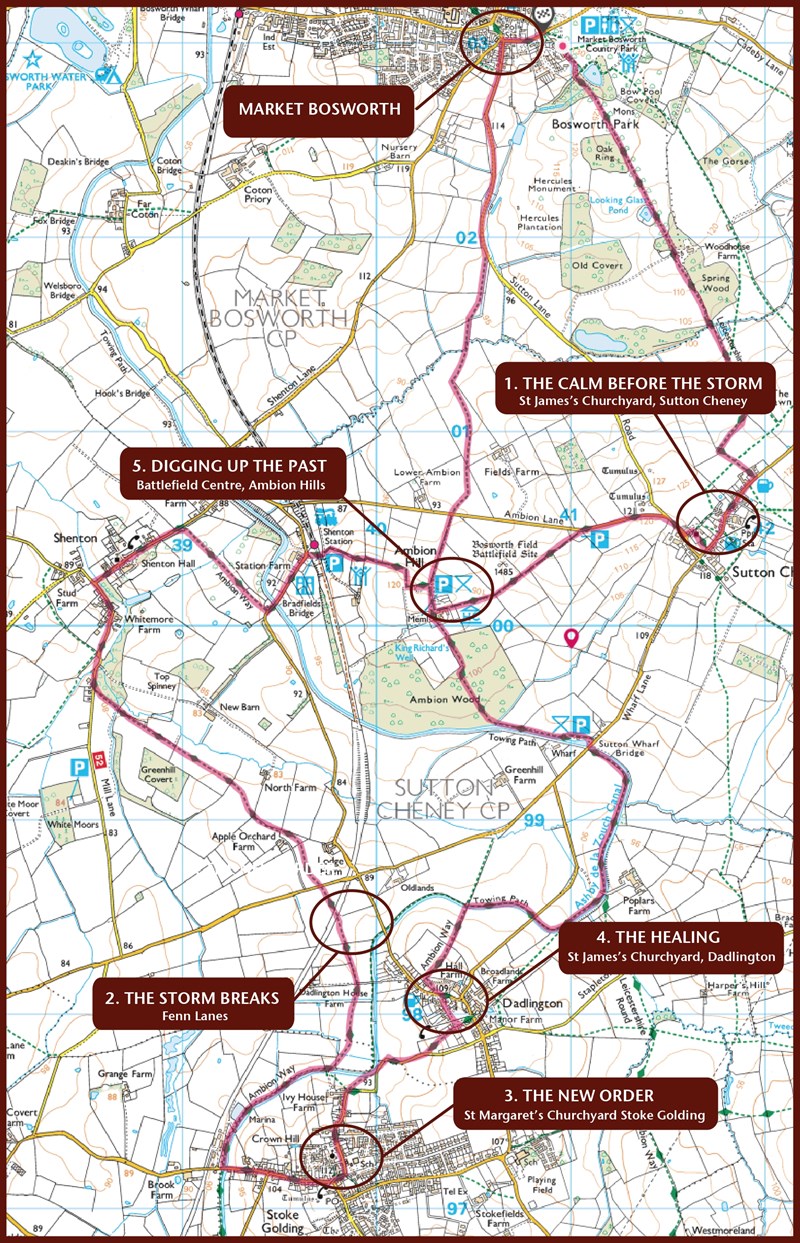Bosworth 1485 - Sculpture Trail
One day, Two kings
Bosworth1485 is creating a new landscape of world-class artworks telling the stories of 5 remarkable places and their role in this incredible story.
Bosworth1485 captures the energy, community spirit, positivity and commitment shown on the day in 2012 when the mortal remains of Richard III’s body were exhumed from under a car park in Leicester and in 2015 reinterred in the cathedral. As the cortège wound its way through the beautiful West Leicestershire landscape, it put a spotlight on this piece of countryside and its communities for one day.
We are now capturing that moment and presenting it for future generations.
Driven by a dynamic and committed partnership of Leicestershire Promotions, Hinckley and Bosworth Borough Council, the local communities and key stakeholders, Bosworth1485 celebrates the stories of people and places and the role they play in shaping history.
A story worth telling
Finding cannonballs, a badge and a king in a car park have all drawn attention to something surprising: that one of the country’s most well-worn yarns is anything but dead history. The details of the battle and moreover the justice of the historical account, are still live topics.
After 500 years the story of Richard III and Henry VII is still being fought over - almost as though the Wars of the Roses continue on, pens replacing swords. But this is lively debate, not bloodshed, and something to be encouraged.
An activity worth promoting
In the 21st century we have no problem getting hold of information. Everything there is to know about the Battle of Bosworth can be found on a smartphone. Except for one thing: the physical experience of moving through the landscape in which it took place.
Embedded artworks offering a physical interpretation of local history, a project designed to draw people away from their screens and out into the natural environment - this seems a form of therapy for our times.
A landscape to listen to
The idea of telling the story of a landscape through an art trail points to an underlying thought: that this is art to help the landscape speak for itself. It is the landscape that shaped and witnessed the events of 1485, and it is in the landscape their traces lie buried. Our ultimate goal is to get the landscape to tell its own story.
The 5 artworks
Against the background thought of embedding art to help the landscape find its voice, we developed a conceptual framework.
1 TRAIL
Linking each location is a walking trail that takes us through the landscape. The process of leading us from one chapter to the next is cumulative, in the sense that the trail is taking us not just from field to field, but on a journey through a story. Hence, completing the trail brings with it a sense of having arrived at an understanding - of the landscape, of a slice of history, of themes we see being played out in the world around us.
2 STORIES
This landscape actually has two stories to tell. There is the story of one day in 1485, and there is the story of the 500 year shadow it has cast through the historical account. By moving from one to the other we are able to present a story-within-a-story that begins half a millennium ago and runs right up to today - and on into the future.
5 CHAPTERS
We have broken this combined story down into 5 chapters, each of which relates to a significant location in the landscape. The 5 chapters are told by 5 artworks in these locations. Each artwork must feel embedded in its setting well enough to tell its part of the story. But these are artworks, not illustrations in a history book. They must pull people into the story by reaching beyond historical details to touch universal themes we can all relate to.
To see the images of the artwork designs or to learn more about the latest project news, please visit www.bosworth1485.com

 Home
Home